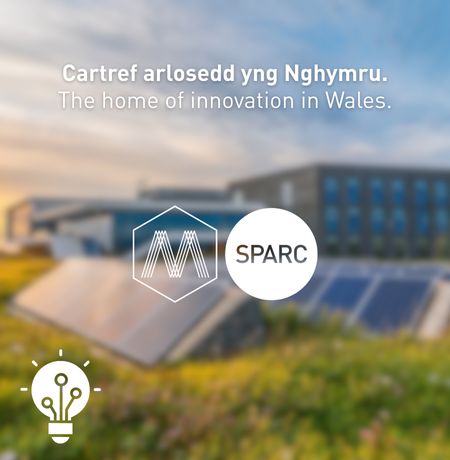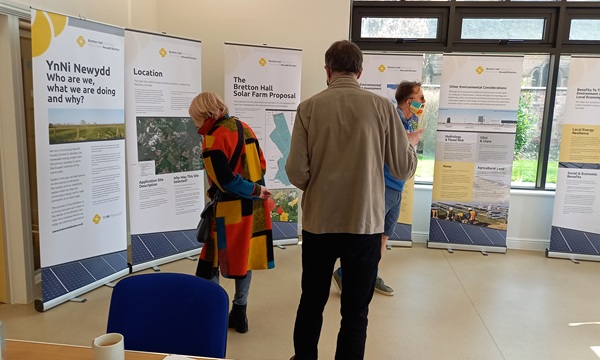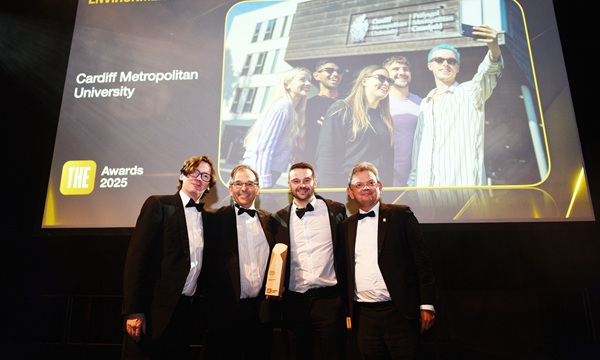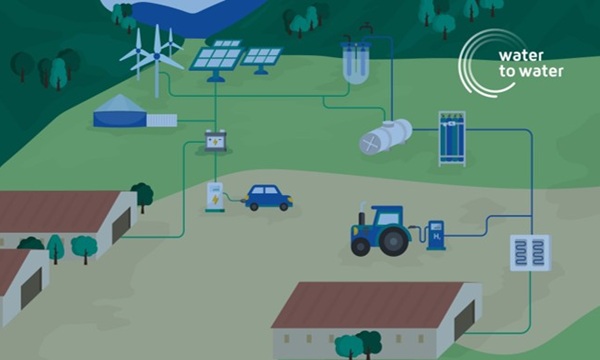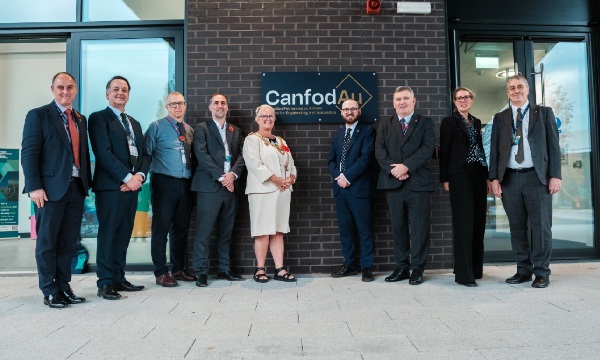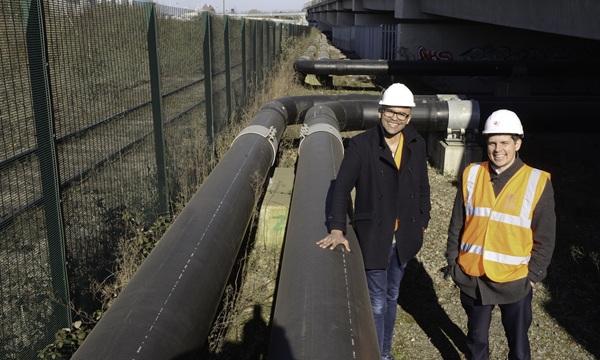
Cardiff Council’s pioneering low-carbon district heat network has delivered heat to its first customer – Cardiff and Vale College.
Heat will also be supplied to Wales Millennium Centre, the Senedd, and other major buildings in Cardiff Bay over the coming weeks.
The network captures heat from steam already produced as a by-product of the process that powers electricity-generating turbines at Viridor’s Trident Park Energy Recovery Facility. The heat is then transported through a network of highly insulated pipes to buildings across Cardiff Bay, where it provides a sustainable source of heat and hot water.
“This is a major milestone on Cardiff’s journey towards carbon neutrality,” said Cardiff Council Cabinet Member for Climate Change, Cllr Dan De’Ath.
“Switching on our heat network eliminates the need for connected buildings to have gas boilers, instantly reducing their carbon emissions by up to 80%.
“This is the first city-scale network of its kind in Wales. It represents a significant investment in delivering the long-term infrastructure needed to ensure we play our part in tackling the global challenge of climate change, and build a stronger, fairer, greener Cardiff.”
The £15.5 million project, led by Cardiff Council and delivered through its arm’s-length company, Cardiff Heat Network Ltd, was funded through a grant from the UK Government’s Heat Networks Investment Project (HNIP) and a loan from the Welsh Government. The network forms a central pillar of the Council’s One Planet Cardiff strategic response to climate change.
The current network represents phase one of a much larger proposed project and there is scope for many more customers to benefit from the low-carbon heat available. Once complete the Heat Network is expected to save over 10,000 tonnes of CO₂e annually – the equivalent of heating around 3,700 homes using a gas boiler – and that figure will grow as the network expands and more buildings connect.
Every year, the Viridor facility diverts around 350,000 tonnes of waste from landfill, using it to generate enough electricity to power the equivalent of 98,000 homes, as well as to create products used in the construction of roads and buildings. Switching on the Heat Network, and repurposing heat which is a by-product of treating the waste helps increase the overall efficiency of the plant.
Pierre Dorel, Managing Director of Viridor Energy, said:
“Viridor is proud to lead the way in resource recovery, turning waste into a climate-positive future. Supplying low-carbon heat to the Cardiff Heat Network marks an important milestone for both our business and the Trident Park facility. This offtake is a real step forward in our mission to create a world where nothing goes to waste, and we’re thrilled to work with Cardiff Council to help achieve its net zero goals.”
Welsh Government’s Deputy First Minister with responsibility for Climate Change, Huw Irranca-Davies, said:
“I’m very pleased to see local authorities across Wales continuing to show real ambition when it comes to cutting carbon emissions. Our loan funding for this project is proof that we remain committed to supporting the public sector to reduce emissions, save on energy, and speed up our journey to net zero.”
UK Government Minister for Energy Consumers, Martin McCluskey, said:
“Seeing Cardiff Bay’s innovative heat network in action, taking waste steam to create heating and hot water for some of the city’s most famous landmarks, highlighted the real-world benefits of clean power.
“Heat networks provide low-carbon, low-cost heating which can support millions of businesses and building owners for years to come, driving down energy bills and helping us take back control of our energy security.”
Cardiff and Vale College Group Chief Operating Officer, Richard Pugsley, said:
“At CAVC we are committed to advancing our journey to net zero, and are delighted to embrace the opportunity of joining the Cardiff Heat Network from its inception. This is an important step for the College that will make a significant contribution to our carbon reduction plans and support the Welsh Government’s net zero ambitions for the education estate.”
Construction of the network of pipes and the new energy centre required for the system has taken approximately four years. During that time the council's main contractors Hemiko employed a network of local sub-contractors, providing employment opportunities that saw approximately 30 local people working on site, for every day of the construction period.
Toby Heysham, Chief Executive of Hemiko, said:
“We’re proud to be working with Cardiff Council to deliver Wales’s first city-scale heat network. It’s a simple but powerful idea: waste becomes wasted heat, and wasted heat becomes usable heat. This network turns energy that would otherwise be wasted into a reliable, affordable source of heat for buildings around the city. By capturing and redirecting heat that would otherwise be lost, the network cuts costs for consumers, supports local growth, and strengthens Cardiff’s energy resilience. It’s a practical, scalable example of how cities can turn hidden energy into lasting benefit, and we look forward to growing the network to unlock even more of Cardiff’s untapped heat potential in the years ahead.”
Wales Millennium Centre, the Senedd, Tŷ Hywel, Tresillian House, Butetown Hub, Butetown Community Centre, and the Scott Harbour flats will all begin receiving heat from the network on a phased basis over the coming weeks.
Cardiff Heat Network Ltd is also in discussions with more potential customers, in close proximity to the network, with a view to adding further connections. Funding options are also being explored for a potential ‘phase 2′ of the network, which could see the network expand further into the city centre.
Although the network’s initial heat source is Viridor’s Energy Recovery Facility, it is designed to be ‘heat source neutral.’ This means that in the future, it could potentially be connected to alternative or additional heat sources such as the groundwater or deep geothermal heat that exists beneath Cardiff’s streets.








